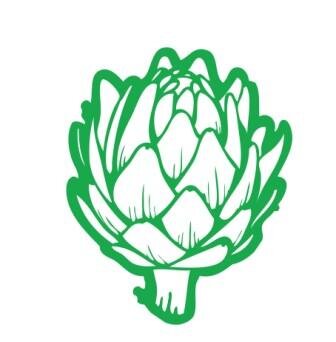Kinnikinnick/Bearberry (Arctostaphylos uva-ursi) *Multiple Sizes Available*



Kinnikinnick/Bearberry (Arctostaphylos uva-ursi) *Multiple Sizes Available*
Great wildlife forage plant and ground cover. Rain gardens, planting strips, slopes and behind retaining walls are nice for this shrub for its beauty as well as erosion control.
This slow-growing evergreen shrubs is one of the best all-around evergreen shrubs because of its hardiness, low maintenance, and year-round visual appeal.
Winter-hardy with flexible branches and leathery leaves. Fruits can be boiled but tend to be mealy and without flavor. Lovely pink flowers produce red berry-like fruits. Attracts bees, butterflies, bears, foxes, coyotes, deer.
Sun: Can tolerate light shade but thrive in full sun.
Soil:
Water: Well-drained, moist to rather dry soil.
Zones: 2 to 6.
Height: 1 to 5 feet.
Spread: 3 to 6 feet.
Maintenance: Low maintenance.
Tolerate: Drought tolerant.
Family: Heath family (Ericaceae)
Native Range: United States Northwest.
Bloom Time: Flowers bloom from mid spring to early summer. Leaves turn bronze in winter. Red berry-like fruits ripen in the fall.
Culture
Grow in acidic, dry to medium, well-drained, sandy or gritty soils in full sun. Tolerates light shade. Usually grows well in poor infertile soils. Plants should not be fertilized. Drought tolerant once established. Likes exposed open sites. Best grown in USDA Zones 2-6 (7). Grows poorly in hot and humid summer climates, and is not recommended for planting in most areas south of USDA Zone 7. Difficult to transplant from the wild. Propagate by cuttings from the current season’s growth, by layering, by division (with care because roots dislike disturbance) or species plants by seed.
Noteworthy Characteristics
Arctostaphylos uva-ursi, known by a large number of common names including common bearberry and kinninnick, is an extremely winter hardy, creeping, slow-growing, prostrate, woody evergreen shrub that typically grows to 6-12” tall but spreads over time by flexible branching (roots at the nodes) to 3-6’ wide or more. This is a circumpolar ground-hugger which is native throughout the northern parts of North America, Europe and Asia. In North America, it is typically found in a variety of locations from Alaska to Newfoundland south through Canada to Virginia, Illinois, South Dakota, New Mexico and central California in a variety of habitats typically including gravelly and/or sandy exposed sites, dry/rocky slopes/outcrops, forest margins and forest clearings. It is primarily confined to cool alpine regions in the more southern parts of its growing range (Appalachians in Virginia, Rockies in New Mexico and Sierras in California).
Branchlets mature to reddish brown, with papery peeling bark on older twigs. Branchlets are clad with alternate, entire, short-stalked, leathery, rounded-at-the-tip, obovate to spatulate, evergreen dark green leaves (each to 1 1/4” long) which are shiny above but paler beneath. Leaves turn bronze in winter before becoming green again in spring. Miniature, drooping, urn-shaped, white-to-pink flowers (to 1/4” long) in small terminal clusters bloom in April to May. Rounded, berry-like fruits (drupes) ripen in August-September. Each drupe (1/2” long) contains 5 nutlets (seeds). Drupes are green in summer ripening to red in fall, sometimes remaining on the plants throughout winter. Drupes are bittersweet raw off the plant, but sweeter when first boiled. Fruits are technically edible for humans, but are generally considered to be mealy and lacking flavor. Meriwether Lewis described these fruits in 1806 to be “tasteless and insipid.” On the plus side, bears, birds and small mammals love the fruits.
Genus name comes from the Greek words arctos meaning bear and staphyle meaning bunch of grapes in reference to the fruits (often in grape-like clusters) which are commonly eaten by bears.
The specific epithet comes from the Latin words uva meaning grape and ursus meaning bear thus bear’s grape, also in reference to the fruits serving in the wild as bear food. Bearberry nickname means the same thing, namely, that bears eat the fruits of this plant.
One of the popular common names for this plant is kinnikinnick which is an Algonquin word meaning smoking mixture. Native Americans and later early pioneers sometimes smoked the dried leaves of bearberry (alone or mixed with other leaves, tobacco and/or the dry inner bark of red osier dogwood) in pipes.
‘Massachusetts’ is a prostrate, flat-growing plant that is noted for producing abundant flowers and fruits. Smaller leaves than those found on species plants. Good disease resistance.
Problems
No serious insect or disease problems. If grown in poorly-drained sites or in climates hotter than preferred, this bearberry becomes more susceptible to certain diseases such as root rot, black mildew, leaf gall, leaf spot and rust.
‘Massachusetts’ has good resistance to leaf gall and leaf spot.
Garden Uses
Moderate to large scale ground cover with year round interest. Helps control soil erosion on slopes and hillsides. Effective when grown around shrubs, along sunny border margins, in naturalized areas and in native plant gardens. Herb gardens. Drape over a wall. Rock gardens.
Teas have been made from certain plant parts (leaves, stems and roots) for a variety of medicinal purposes (antiseptic, astringent and diuretic). Leaves are rich in tannins and have been used in the process of tanning hides/leather. Sprigs of green leaves with red berries may be used as Christmas decorations.











